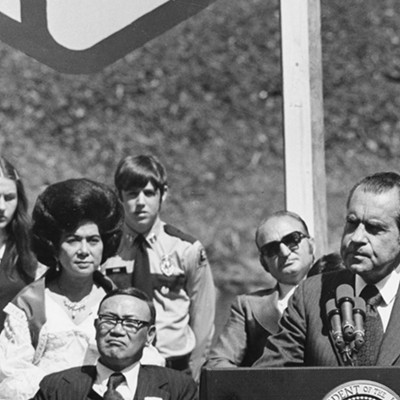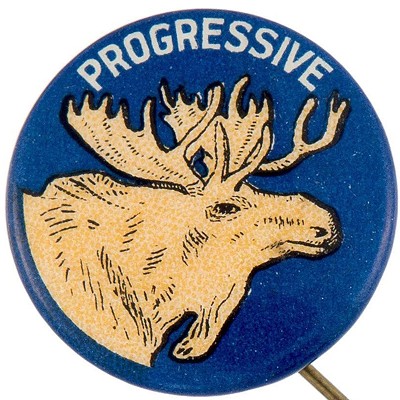by ROBERT HEROLD & r & & r & & lt;span class= & quot;dropcap & quot; & I & lt;/span & t was exactly 7 am when I dropped my brother off at Sea-Tac Airport. I then headed home -- north on I-405 to I-90 and east to Spokane. It took me almost 45 minutes to drive less than 20 miles. A few cars sped by me in the express lane, but more than 80 percent were bumper to bumper. I've since learned that I-405 has one of the very worst stretches of traffic in America.
As I made my way not so much "through" the congestion as "with it" I wondered -- again -- why neither presidential candidate has yet engaged the problem of gasoline consumption in the short term. From McCain we hear the Bush mantra -- drill, drill, drill. Obama stresses the importance of alternative fuels. Biofuels. Wind generators. All are longer-term solutions. Neither candidate has yet to confront the more immediate if more manageable short-term challenge -- reduction of commuter drive times and volume. If every one of those cars on I-405 was occupied by four passengers instead of one, we would cut gasoline consumption by a factor of at least three and maybe more, because with two-thirds fewer cars on the road we would see much less stop-and-go driving and thus would experience far greater fuel usage efficiency, which hasn't been improved since the Carter years. (Detroit, ever so short sighted, took full advantage of Reagan's "Morning in America" theme to reverse all fuel efficiency progress made during the Carter years. Went right to SUVs.)
With the steep rise in gas prices, public transportation authorities report that passengers are riding millions more miles. There are ways to do even better. My father, during the 1950s, was part of a carpool. Four guys. One car. Five days a week.
So, what incentives might work to encourage an increase in carpooling? Why not during rush hours open two express lanes? Commuters will then have an added incentive to carpool -- much faster drive times in the express lane; much worse in the regular lanes. At the same time, cities need to drop the express lanes during the weekends. On weekends these lanes add to congestion. And frankly, I suspect that they are viewed by law enforcement as cheap-shot fundraisers.
Surely the wisdom of growth management can no longer be lost on anyone but the most grasping. Centers, if fully developed, can reduce sprawl and also reduce gasoline usage -- while, urbanists argue, actually improving our standard of living.
The success of growth management presupposes that cities and counties can muster the will to ensure densification -- which, in turn, presupposes that they can provide much more convenient public transit necessary to the success of centers. Light rail stations are natural centers. (Europeans and the British in particular figured this out a century ago.) By convenient, I'm talking about buses or trains running not every half-hour, not even every 15 minutes, but perhaps every 5 to 8 minutes. This is about all the time you ever have to wait for a train at a D.C. Metro stop or at an MBTA stop in Boston. The rickety old London "tube" does even better.
And as for strategic uses of public transportation, isn't it time for America to seriously reconsider rapid rail for medium-distance travel? Say, fewer than 300 miles. Why did I drive my car to Seattle last week instead of flying? It wasn't the cost that got me into my car. I have enough frequent flyers to fly for free. I drove because it was more convenient, and I don't save much, if any, time flying. How could that be you ask? The flight time to Seattle is less than an hour.
Well, let's do a more detailed comparison: The drive to Seattle takes less than four and a half hours. Set the cruise control on 70 mph and you will easily make it in that time. So, if I leave Spokane at 8:30 am, I can expect to arrive in Seattle by 1 pm. On the other hand, if I take a 10 am flight I now have to leave my house at 8:30. Let's figure an hour from gate to gate. This gets us to the Sea-Tac gate at 11 am. Half an hour to walk and wait for baggage and it is now pushing 11:30. If I take the bus into Seattle (the cheapest way to go), we are looking at 10 to 20 minutes to catch the bus and a half-hour into downtown -- we have passed noon. But, I don't want to stay downtown, my destination is the University District. So, I must transfer. Another wait, and perhaps 20 minutes through traffic to my destination. By this time the clock reads -- give or take --1 pm. Compared to driving, flying to Seattle is a wash. But a two-hour ride on a bullet train? That takes you right downtown to Safeco Field where you can easily catch a bus or a cab. We might have even turned Spokane into a "state center" -- people could actually commute to Seattle to work, or vice versa. And speaking of trains, once the rail project to Sea-Tac is completed -- no surprise -- fewer cars. That's how rail works.
There's a lot to do, some little things in the short run, the prospect of more strategic things in the long run. And we haven't begun to consider the job benefits from public works projects. FDR figured this out 80 years ago.
Why not a genuine "Morning in America"?
New Morning in America
[
{
"name": "Broadstreet - Instory",
"component": "25846487",
"insertPoint": "4",
"requiredCountToDisplay": "4"
},{
"name": "Broadstreet - Empower Local",
"component": "27852456",
"insertPoint": "8",
"requiredCountToDisplay": "8"
},{
"name": "Broadstreet - Instory",
"component": "25846487",
"insertPoint": "12",
"requiredCountToDisplay": "12"
},{
"name": "Broadstreet - Instory - 728x90 / 970x250",
"component": "27852677",
"insertPoint": "18",
"requiredCountToDisplay": "18"
},{
"name": "Broadstreet - Instory",
"component": "25846487",
"insertPoint": "5th",
"startingPoint": "23",
"requiredCountToDisplay": "24",
"maxInsertions": 100
}
]















